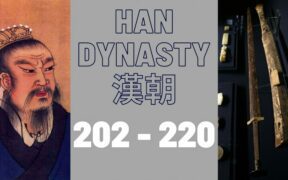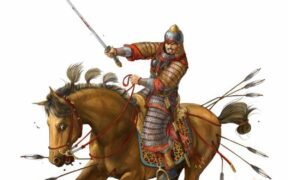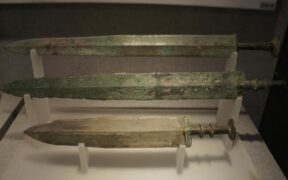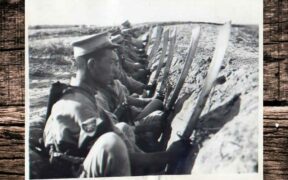Our content features commercial links to our products, committed to transparent, unbiased, and informed editorial recommendations. Learn More
Han Dynasty Swords and Their Historical Significance
NO AI USED This Article has been written and edited by our team with no help of the AI
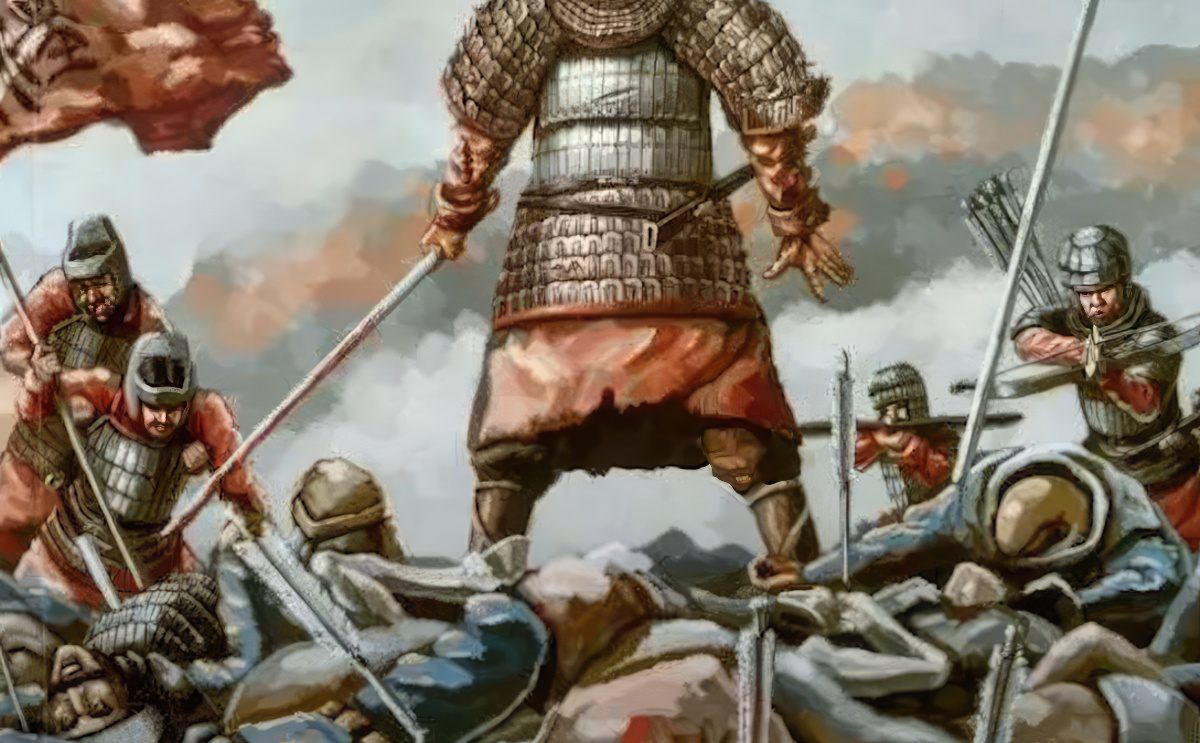
The Han Dynasty was a time in China’s history from 206 BC to 220 AD. This period was famous for soldiers with strong armor and big advances in making steel swords. These new methods created top-quality swords that were very different from before.
A “Han sword” is a name for any sword with one or two sharp edges from this time. These swords are special because of the great skills used to make them.
In this article, we’ll explore these swords from the Chinese Han Dynasty. We’ll tell you what they are, how people used them, and their history.
Han Dynasty Dao
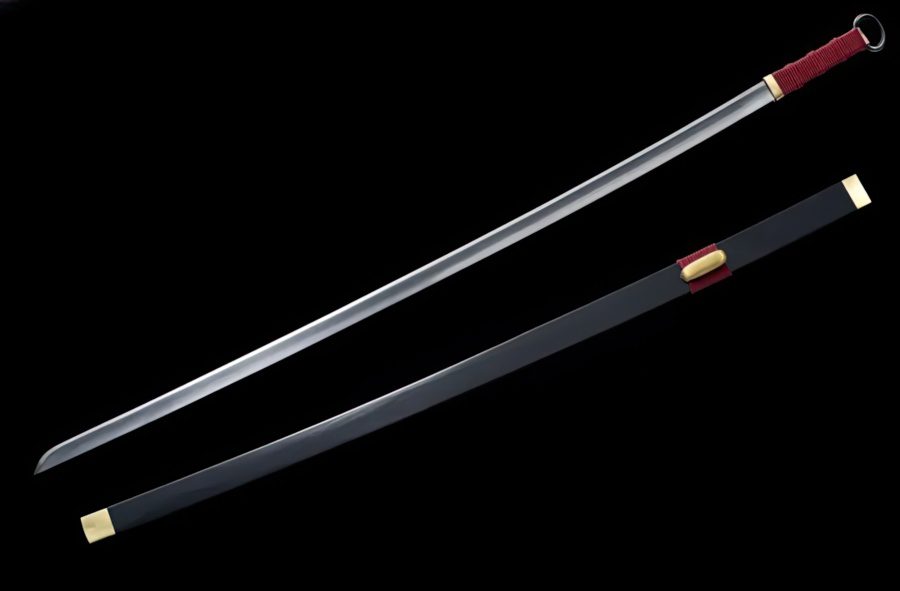
The Han Dao, made around 100 BC, is known as the first of all Chinese Dao swords. It shaped how Chinese swords were made and looked for the next 800 years.
The Han Dao had the best steel blade of its time. It was unbeatable in battle. The skilled horse riders from Northern China inspired the making of this powerful cutting sword.
This sword was not just cheaper to make and easier to learn to use, but it was also as good as the Jian sword. That’s why both regular soldiers and leaders preferred it.
The Long or Cavalry Han Dao has one sharp edge and a slight curve, like the Miao Dao saber. It also has a ring at the end of the handle.
This design is different from swords made in later times, like the Tang Dao. The curve might be there to help with fast horseback battles, a style that became popular in the Tang dynasty, 400 years later. The usual size of this sword is about 41 inches (105 cm) long.
Short Han Dao
The shorter or infantry version is the smaller and more compact type of high-quality Han Dao sword.
These swords didn’t have the slight curve that the cavalry ones had and were primarily used one-handed combined with a shield in the other hand.
These short swords were straight, with a single edge for slashing and a sharp tip for thrusting. They would be worn in their scabbards as secondary weapons if using the popular halberd.
They could also be used as primary weapons since their length is around 30 inches (75 cm), which is ideal for any battle.
Han Dynasty Jian
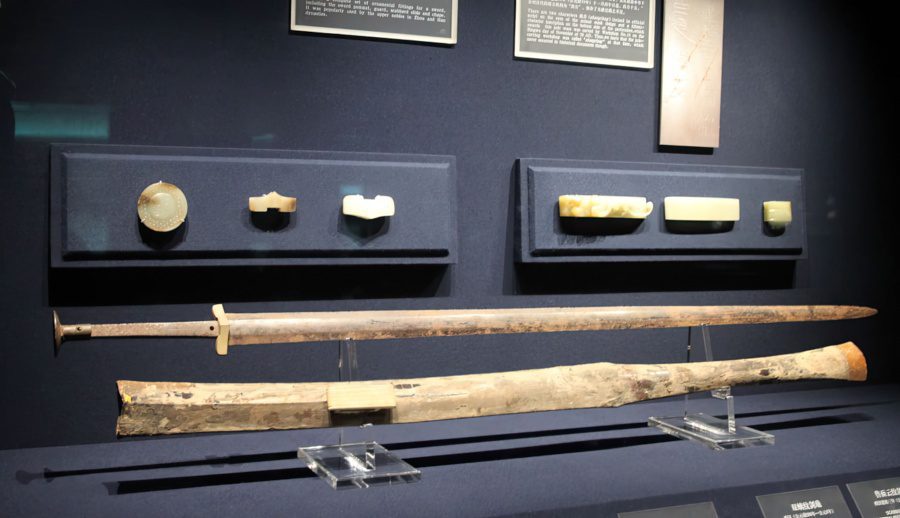
China’s previous main double-edged sword was also upgraded and made into a much finer piece resulting in the powerful Han Jian.
Its stronger high carbon steel core with the lower carbon side plates meant it was capable of both slashing and thrusting attacks.
It looked similar to a regular Jian sword, with a double-edged blade that tapered into a sharp point but much larger than before. There were instances of two-handed Jians being used during this period.
It was used in warfare and battles, but because it needed more time to master, as well as time to manufacture and maintain, it was eventually phased out.
Although this did not happen entirely during the Han Dynasty, it slowly became a standard symbol sword for the elite.
Shuangshou Jian
Thanks to superior steel, larger two-handed long swords like the Shuangshou Jian were devised and could be used in swinging motions for attacking incoming cavalry or heavily armored troops that were in high use during this period.
The blade length for some of these large Jians could reach 51 inches (130 cm).
Use of the Han Swords
It’s important to know that early Han swords like the Dao were not just for slashing, even though they had one sharp edge. They were also good for stabbing. The Jian sword was great for strong slashing too.
Both swords had solid, hand-made blades that could hit hard, even through thick armor. The main difference was that the Dao was easier and cheaper to make and use, while the Jian was a bit more complex. That’s why the Han Dao and Jian had different uses.
- Dao – the main warfare weapon accepted by every type of swordsman that would grow into the Chinese sabre, used for centuries to come
- Jian – a power symbol of the nobility and mostly used for fencing, kung fu, and wushu martial arts
History of Han Dynasty Swords
Chinese effective swords used in battle came about during the Autumn period with the Longquan sword made by the legendary Ou Yezi, which was improved upon across the Warring States period and the Qin conquests.
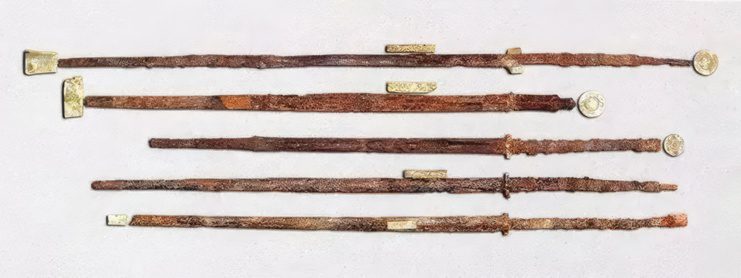
During the Han Dynasty, there were many wars, both attacking and defending, leading to wins and losses. The Han rulers often struggled with money problems.
They had to take control of things like alcohol, salt, and especially iron to make more money.
To save costs, the Han Dynasty saw big improvements in sword technology. They made weapons that were good for both cutting and stabbing, and lasted a long time. Even beginners could use these weapons well, and experts were unbeatable with them.
The single-edged Dao with a straight ring on the handle was very effective on foot with a shield or in horseback battles.
These top-quality steel swords were used even after the Han Dynasty. In the Song and Tang dynasties, they got even better and more people used them.
During this time, the Jian became a sword for training, and the Dao became the most common sword to use.
The Han steel swords inspired the creation of the samurai swords, the Japanese Katana being the most recognized in media, anime, and many martial arts.
